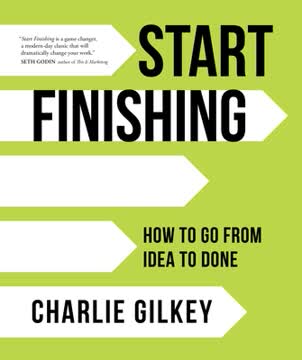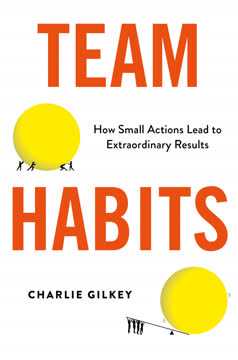Key Takeaways
1. Stop Starting, Start Finishing Projects That Matter
We don’t do ideas; we do projects.
Ideas remain dormant. Many people have brilliant ideas buried away, waiting for a "someday" that never arrives. Starting new things only adds to this pile of unfinished potential, leading to creative constipation and dissatisfaction. The key isn't more ideas or more starts, but converting those ideas into tangible projects.
Projects require action. A project is defined as anything that demands time, energy, and attention to complete, whether personal or professional. Recognizing everything from organizing a closet to starting a business as a project helps you see where your limited resources are actually going and where they need to go to enable you to thrive. We thrive by doing our best work, and best work is always expressed through finished projects.
Best work is unique. Your best work is something only you can do, leveraging your unique experiences and skills. It serves both you and others, pushing you to the edge of your capabilities and comfort zone. This inherent challenge is why it's easily displaced by easier tasks, making the focus on finishing crucial for a meaningful life.
2. Overcome the "Air Sandwich" Blocking Your Best Work
In between the two slices of bread are actually five different challenges that combine to keep us from spending our days working on what matters most.
The gap exists. Many people experience a frustrating gap between their big-picture vision and their day-to-day reality, like an "air sandwich." This isn't empty space but is filled with specific challenges preventing progress on what matters most. Identifying these challenges is the first step to bridging the gap.
Five core challenges: The air sandwich is filled by:
- Competing priorities (ours and others')
- Head trash (self-limiting beliefs)
- No realistic plan (or confusing ideas for plans)
- Too few resources (or not seeing/using what you have)
- Poor team alignment (not communicating needs to your support system)
Challenges work together. These obstacles rarely appear in isolation; they work in concert, making simple solutions ineffective. Addressing one challenge, like creating a realistic plan, often requires tackling others simultaneously, such as confronting head trash about your planning ability or aligning your team.
3. Cultivate the Five Keys: Intention, Awareness, Boundaries, Courage, Discipline
The core keys to unlocking our best work include: Intention, Awareness, Boundaries, Courage, Discipline.
Virtues for thriving. Overcoming the air sandwich and doing your best work requires cultivating specific practices, synthesized here as five key virtues. These are not innate talents but practiced behaviors that can be developed, helping you navigate challenges and stay on course.
Keys unlock potential:
- Intention: Setting clear goals and purposes for your time and energy.
- Awareness: Knowing yourself, your energy levels, and recognizing obstacles.
- Boundaries: Creating space for your work and space from distractions and others' demands.
- Courage: Taking action despite fear, especially when facing uncertainty or sharing your work.
- Discipline: Sticking to the plan and doing the work, even when you don't feel like it, creating freedom.
Practice makes progress. You likely under- or over-cultivate certain keys. Recognizing which keys you need to practice more is crucial. Discipline, often misunderstood as punishment, actually creates freedom by enabling you to consistently do what matters most, leading to happiness and success.
4. Embrace Thrashing and Let Go of Ideas That Don't Matter
The more an idea matters to you, the more you’ll thrash, precisely because its success or failure is deeply important to you.
Thrashing is a sign. Thrashing is the emotional flailing and metawork you do around an idea without making real progress. It's not laziness but a sign the idea matters deeply, triggering fears and head trash. You might thrash before, during, or at the end of a project.
Creative constipation hurts. Avoiding your best work leads to creative constipation, a toxic state where you're full of ideas but can't push them out. This energy turns destructive, leading to resentment, diminished joy, and self-sabotage. Channeling this energy into creation is vital for thriving.
Letting go is necessary. You're likely carrying too many ideas and projects, displacing your best work. To trade up to what matters most, you must consciously let go of less important ideas, even if it feels uncomfortable. This frees up energy and focus for the projects you choose to finish.
5. Convert Ideas into SMART Goals and Choose Your Success Level
To get to the place our soul longs to be, we’re going to have to convert our ideas into doable projects at the same time that we’re going to have to get real about all the projects we are doing.
Ideas need structure. An idea is formless; a goal provides direction. Converting your chosen idea into a SMART goal makes it tangible and actionable. SMART stands for Simple, Meaningful, Actionable, Realistic, and Trackable.
SMART goal components:
- Simple: Easy to understand without ambiguity.
- Meaningful: Connects to your deeper purpose or values.
- Actionable: Clearly indicates what steps to take (often starts with a verb).
- Realistic: Achievable with available resources and constraints.
- Trackable: Progress can be measured, quantitatively or qualitatively.
Levels of success. Success isn't binary (pass/fail); it has levels: Small (minimum to pass), Moderate (exceeds minimum, achievable alone), and Epic (greatly exceeds, requires a team). Choosing a realistic level of success aligns expectations with effort and resources, preventing overwhelm and disappointment.
6. Build and Activate Your Success Pack for Support
Your success pack is the group of people who are going to be instrumentally involved in helping you push your best-work project to done.
You can't do it alone. Finishing significant projects, especially epic ones, requires support. Your success pack is your team, providing fuel and diverse perspectives. Focusing on these "yaysayers" helps counteract the disproportionate weight we give to naysayers.
Four kinds of support:
- Guides: More experienced people you look up to (living or historical).
- Peers: People at a similar level who can provide reciprocal support and challenge you.
- Supporters: People doing work with and for you (e.g., partner, sitter, assistant).
- Beneficiaries: Specific people who will benefit from your finished work.
Activate your team. Building the pack is just the start; you must actively use it. List specific people, brainstorm how they can help (and you can help them), determine communication frequency, and proactively communicate progress and needs. This makes the project real and creates accountability.
7. Make Space for Your Project Using the Project Pyramid and Five Projects Rule
You don’t find time and space for your best work—you make time and space for it.
Time must be made. You won't magically find time for your best work; you must intentionally create it. This involves rethinking how you view and use time, treating it as space to be filled with purposeful activity. Chunking, linking, and sequencing are essential skills for this.
The Project Pyramid: Projects break down into smaller chunks across different timescales (year, quarter, month, week, block, task). One large project spawns many smaller tasks. Understanding this hierarchy reveals why overcommitting is common – you're trying to fit too many large projects into limited time, leading to overwhelm.
The Five Projects Rule: Limit yourself to no more than five active projects per timescale (though three is often more realistic for creative/professional work). This constraint forces prioritization and makes planning manageable. It helps overcome the challenges of having no realistic plan and too few resources by focusing your limited capacity.
8. Optimize Your Environment and Timing for Focused Work
Make sure your environment is working for you.
Environment matters. Your physical environment significantly impacts your focus, momentum, and creativity. Factors like sound, smell, sunlight, clothing, clutter, and space influence your ability to do deep work. Identify what works best for you and actively shape your surroundings.
Batching and stacking: Increase efficiency by:
- Batching: Doing similar tasks together (e.g., processing emails in one block).
- Stacking: Doing compatible dissimilar tasks simultaneously (e.g., listening to a podcast while exercising).
Timing is personal. Don't force yourself into a schedule that doesn't match your natural chronotype (lark, emu, owl). Identify your peak energy times for different types of work (focus, social, admin) and build your schedule around them. Mondays and Tuesdays are often best for deep work, while later in the week suits collaborative or lighter tasks.
9. Build Daily Momentum with Routines and the 5/10/15 Split
How we spend our days is, of course, how we live our lives.
Days build a life. Thriving is built day by day through purposeful action. Daily momentum is crucial because days are where distractions and challenges derail progress. Each step, no matter how small, creates a different path for tomorrow.
Defaults reduce friction. Habits (single behaviors) and routines (sequences of habits) are powerful defaults that reduce decision fatigue and conserve energy. Create routines for morning, bedtime, work warm-up/checkout, and transitions. Use anchors (environments, tools) to trigger desired habits.
The 5/10/15 Split: A simple daily planning method:
- 5: Focus on your Five Projects (for the week/day).
- 10: Spend 10 minutes in the morning checking your plan and identifying the first task.
- 15: Spend 15 minutes in the evening reviewing accomplishments, noting unfinished tasks, and planning for tomorrow.
This split helps you start strong, disengage effectively, and maintain momentum without overplanning too far in advance.
10. Account for Drag Points: No-Win Scenarios, OPP, Derailers, and Naysayers
Reality will push against the design of your project road map.
Drag slows progress. Just like vehicles face drag, your projects will encounter resistance. This drag often comes from people, including yourself. Identifying these drag points allows you to plan for them and mitigate their impact.
Internal drag: No-win scenarios you tell yourself:
- Success will wreck relationships.
- Success requires sacrificing virtue.
- You won't be able to replicate success ("What if I can't do it again?").
These beliefs lead to choosing mediocrity as a "safe" play.
External drag:
- OPP (Other People's Priorities): Demands and expectations from others that conflict with your project. Address by creating space, saying no, or weaving them into your project.
- Derailers: Well-meaning people whose "help" throws you off course. Manage by setting boundaries and requesting specific feedback.
- Naysayers: People actively against you or your project. Avoid engaging; focus energy on your success pack instead.
Premortem planning. Conduct a project premortem by asking how the project might fail. This helps identify potential drag points (no-wins, OPP, derailers, naysayers, overcommitment, head trash) so you can proactively plan to prevent or address them.
11. Get Unstuck by Addressing Cascades, Logjams, and Tarpits
Projects get off track, and the more a project gets off track, the more likely it is to end up stuck.
Projects stall. Even with planning, projects can get stuck. Recognizing the type of stuckness helps you apply the right solution.
Types of stuck projects:
- Cascades: One project falling behind causes others to fall behind. Solution: Stop taking on new projects, prioritize essential ones, and work sequentially using the snowball method.
- Logjams: Too many parallel projects with simultaneous deadlines. Solution: Review conflicting chunks, triage projects, and renegotiate deadlines.
- Tarpits: Projects that get harder to pick up the longer they're stuck. Solution: Confirm it's not dead, reconnect with the pain of inaction, chunk smaller, and work on it at least twice a week.
Preventing stuckness. Many stuck projects result from overcommitment or misalignment with priorities. Regularly reviewing your Five Projects and capacity helps prevent these issues. Getting unstuck requires finishing essential projects and committing to fewer in the future.
12. Finish Strong, Run a Victory Lap, and Conduct After-Action Reviews
Great is the art of beginning, but greater is the art of ending.
Finishing transforms. Crossing the finish line on a best-work project is exhilarating and transformative. You become a different person through the act of creation. Don't rush to the next thing; acknowledge the journey and the accomplishment.
Celebrate success. Run a victory lap to acknowledge your achievement and be seen for it. This isn't bragging but a vital part of the process. Celebrate small wins daily to build momentum and make big finishes feel earned.
Transition and review. Create transition time and space between projects to avoid burnout. Conduct an after-action review (AAR) to learn from the project:
- What was supposed to happen?
- What actually happened?
- What went well?
- What could be improved?
- What will you do differently next time?
Unlock new doors. Finishing a project unlocks new possibilities, skills, relationships, and confidence. It proves you can do what you set out to do, fueling future best work.
Last updated:
FAQ
1. What is Start Finishing: How to Go from Idea to Done by Charlie Gilkey about?
- Project-focused approach: The book teaches readers to turn ideas into actionable projects, emphasizing that meaningful progress comes from finishing, not just starting.
- Best work and thriving: Gilkey argues that we thrive by doing our best work—projects that matter deeply to us and serve others.
- Navigating a project world: The author frames life and careers as a series of overlapping projects, helping readers manage change and uncertainty.
- Practical, actionable guidance: The book is structured to help readers clear space, plan, and execute projects, providing tools and mindsets to move from idea to done.
2. Why should I read Start Finishing by Charlie Gilkey?
- Overcome common barriers: The book addresses overwhelm, procrastination, distractions, and internal resistance that keep people from finishing important projects.
- Develop sustainable habits: Readers learn to build routines, environments, and support systems that foster consistent progress and reduce decision fatigue.
- Achieve meaningful progress: By applying Gilkey’s methods, you can consistently finish projects that matter, celebrate wins, and lead a more fulfilling creative and professional life.
- Unlock your best work: The book helps you identify and prioritize projects that align with your values and long-term goals.
3. What are the key takeaways and core concepts from Start Finishing by Charlie Gilkey?
- Five Keys to Best Work: Intention, awareness, boundaries, courage, and discipline are essential for finishing meaningful projects.
- Five Projects Rule: Limit yourself to no more than five active projects per time perspective (quarter, month, week) to avoid overcommitment and increase completion rates.
- Project Road Map: Visualize and schedule project chunks based on realistic capacity, not just deadlines, to maintain momentum and avoid overwhelm.
- Success Pack: Build a team of guides, peers, supporters, and beneficiaries to provide accountability, feedback, and motivation.
4. How does Charlie Gilkey define a "project" in Start Finishing and why is this important?
- Projects require resources: A project is anything that takes time, energy, and attention to complete, whether personal or professional, big or small.
- Mirrors and bridges: Projects reflect your inner and outer worlds and serve as bridges to the life and work you desire.
- Interconnected layers: Life consists of overlapping projects of various sizes, from daily tasks to multi-year endeavors, all interconnected.
- Intentional project management: Converting ideas into projects and managing them intentionally is key to thriving and avoiding creative stagnation.
5. What are the Five Keys to doing your best work according to Start Finishing by Charlie Gilkey?
- Intention: Start with clear goals and purpose to prioritize what truly matters.
- Awareness: Know your energy, emotions, and environment to align work with your strengths and rhythms.
- Boundaries: Create positive and negative boundaries to protect your focus and progress.
- Courage: Show up and act despite fear, especially during challenging phases of a project.
- Discipline: Commit to consistent action, channeling energy into sticking with your plans even when motivation fades.
6. What is the "air sandwich" concept in Start Finishing and how does it impact project completion?
- Gap between vision and reality: The "air sandwich" is the space between your big-picture goals and your daily reality, often filled with invisible challenges.
- Five challenges fill the gap: Competing priorities, self-limiting beliefs ("head trash"), lack of a realistic plan, insufficient resources, and poor team alignment.
- Interconnected obstacles: These challenges often appear together, making it hard to focus and finish projects.
- Five keys as solutions: Intention, awareness, boundaries, courage, and discipline help bridge the gap and align daily actions with your vision.
7. How does Start Finishing by Charlie Gilkey help readers choose which ideas and projects to pursue?
- Thrashing as a signal: Emotional resistance or "thrashing" often indicates an idea that truly matters to you.
- Avoid creative constipation: Not acting on important ideas leads to frustration and stifled creativity.
- Five evaluation questions: Assess ideas by imagining celebration, feeling loss, willingness to sacrifice, long-term impact, and fit within your limited project slots.
- Letting go to trade up: Release less important projects to free up energy for those that matter most.
8. What is the Five Projects Rule in Start Finishing and how does it help with focus and productivity?
- Limit active projects: Only have up to five active projects per time perspective (quarter, month, week) to avoid overcommitment.
- Increase completion rates: Focusing on fewer projects at a time leads to more finished work and less overwhelm.
- Manage capacity realistically: The rule helps you align your workload with your actual capacity, not just your ambitions.
- Prioritize what matters: Forces you to make intentional choices about which projects deserve your attention.
9. How does Start Finishing by Charlie Gilkey recommend planning and scheduling projects for success?
- Project Road Map: Break projects into manageable chunks, sequence them logically, and place them on a visual timeline based on realistic estimates.
- Chunking, linking, sequencing: Divide work into parts, connect related tasks, and order them over time to avoid overwhelm.
- Capacity over deadlines: Build plans based on your actual creative capacity, not arbitrary deadlines, and adjust as needed.
- Include relay time: Account for waiting periods when projects involve others to prevent delays and frustration.
10. What is a "success pack" in Start Finishing and how do you build one?
- Project support team: A success pack consists of guides, peers, supporters, and beneficiaries who help you complete your project.
- Guides and peers: Seek wisdom and perspective from experienced guides, and reciprocal support from peers at your level.
- Supporters and beneficiaries: Enlist people who help with tasks or logistics, and those who benefit from your work to keep you motivated.
- Accountability and feedback: Your success pack provides encouragement, accountability, and valuable feedback throughout your project.
11. How does Start Finishing by Charlie Gilkey address managing distractions, interruptions, and other people’s priorities?
- Distinguish interruptions and distractions: Interruptions are external (people, calls), while distractions are internal (social media, email); each requires different strategies.
- Set boundaries and negotiate: Protect focus time by negotiating "dark" periods, using physical and digital boundaries, and communicating your needs.
- Handle OPP, derailers, and naysayers: Set clear boundaries with others, confirm support, request specific feedback, and avoid engaging with naysayers.
- Batch and stack work: Group similar tasks and combine compatible activities to reduce context switching and increase efficiency.
12. What does Start Finishing by Charlie Gilkey recommend for finishing strong and transitioning after a project?
- Run a victory lap: Celebrate your success with your support network to acknowledge effort and build motivation for future projects.
- Allow transition time: Take downtime to recover, catch up on low-energy tasks, and reconnect with people and hobbies before starting the next project.
- CAT work and after-action reviews: Clean up, archive, and trash project materials, and conduct reviews to capture lessons learned and improve future work.
- Prevent burnout: These practices help maintain long-term productivity and ensure you’re ready for your next meaningful project.
Review Summary
Start Finishing receives mostly positive reviews, with readers praising its practical advice and motivational approach to completing projects. Many find the book's strategies for overcoming procrastination and organizing time helpful. Some readers appreciate the author's understanding of creative personalities and the challenges they face. While a few reviewers found the content repetitive or difficult to implement, most recommend the book for its actionable insights on productivity and project management. The book's design and layout are also frequently complimented.
Similar Books
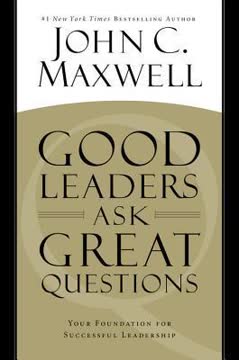

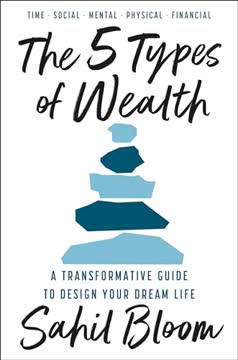
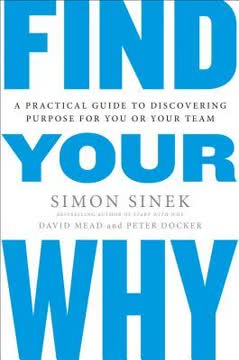
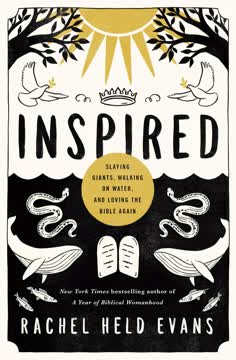
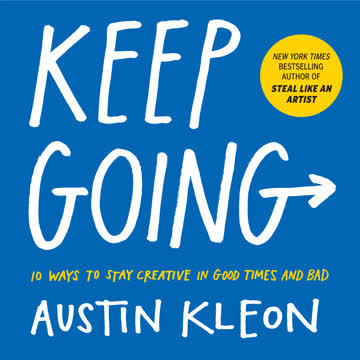
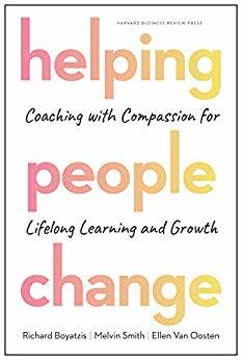
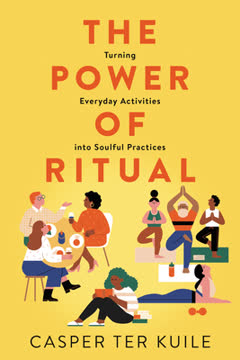
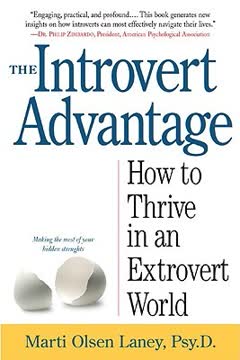
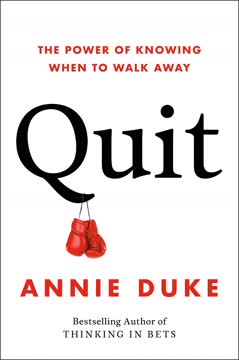
Download PDF
Download EPUB
.epub digital book format is ideal for reading ebooks on phones, tablets, and e-readers.
